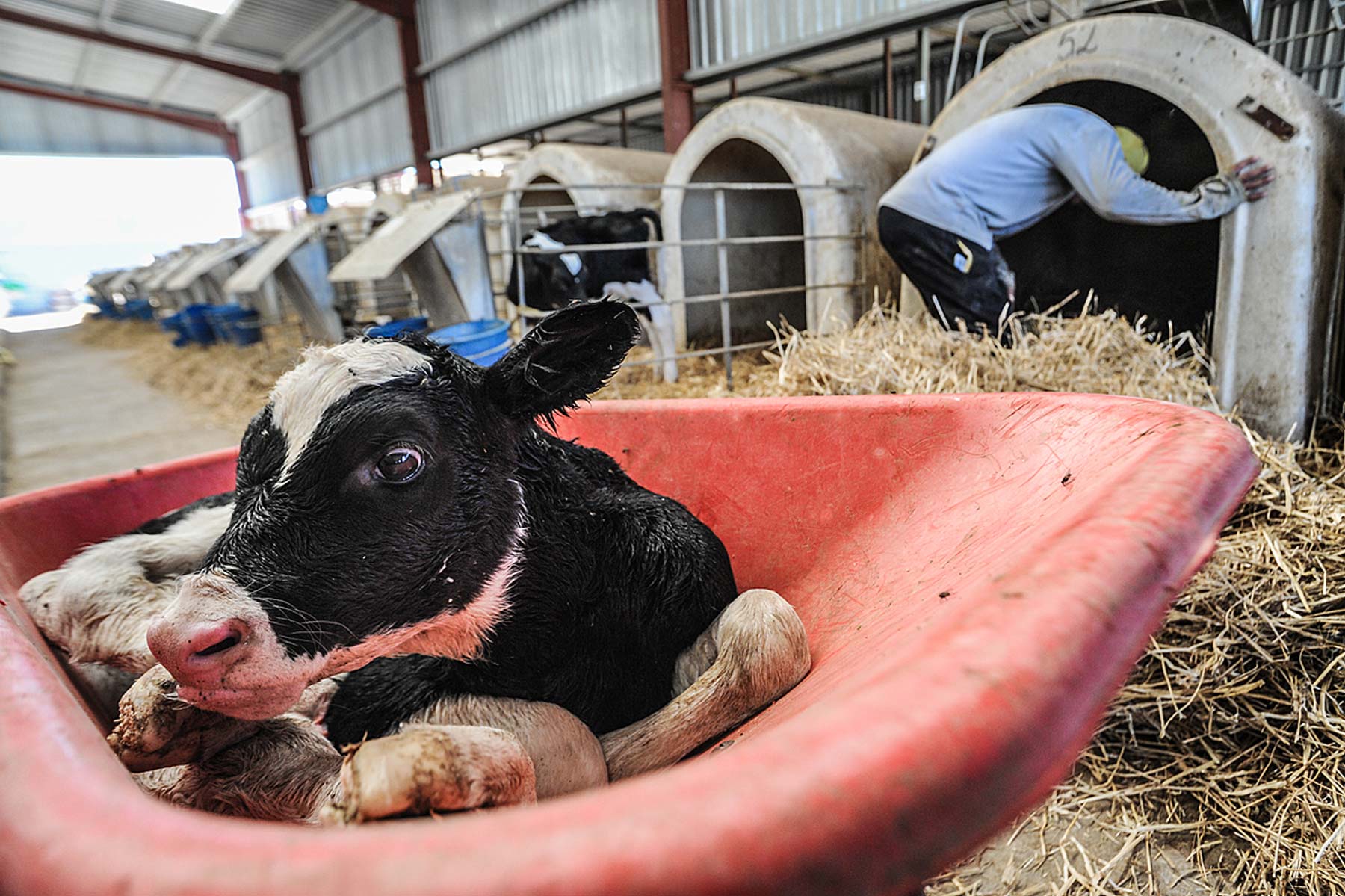

#Veal calf age free
Zinc and copper are very important minerals for boosting immunity so providing a good vitamin and trace mineral package free choice or in a total mixed ration is important to the young calf as well. Distillers grains, a by-product of the ethanol industry is an example of a protein supplement that is a good source of rumen undegradable protein for the young growing calf.Īn example diet for a 300-pound calf that would support 2.0 pounds/day gain would be 3 pounds of dried distillers and 7 pounds of a 50:50 blend of oat hay and alfalfa. Supplementing a protein source that is not easily digested by the microbes and is then available at the tissue level can help support gain without the calves depositing fat instead of lean growth. A young calf needs to be able to eat small frequent meals, as the rumen is so much smaller.īecause milk bypasses the rumen and goes straight to the abomasum via closure of the esophageal groove, it is a very digestible source of protein and energy, available to the animal for bone and muscle growth, as opposed to being available as a nitrogen source for the microbial population in the rumen. A mature cow has a large rumen and has the potential to consume enough low quality feed to meet her needs in most cases. Diets containing residues or low quality hay which are often poorly digested, slow the rate of passage through the digestive tract and therefore, limit intake, which in turn can limit gain. Therefore, a nutrient dense, highly digestible diet with a fast passage rate will allow the calf to consume, digest, and absorb the nutrients needed. Although young beef calves begin eating solid food by 30 days of age, the rumen is still small in the young calf. With the removal of milk in the diet through weaning, another source of high quality nutrition needs to be provided if the same level of daily gain is desired. Milk is a great source of nutrition for the young calf.

Higher quality feed, which may be in limited supply, can be reserved for the rapidly growing calf. Once weaning has occurred, the cow, now without the demands of lactation, can be maintained on poor quality forage and little to no supplement. Early weaning may be advantageous in times of drought, when cows are in a confinement system, or as a body condition management tool for very young or old cows. In extreme cases beef calves may be weaned at 45 days of age, but more commonly early weaned calves are over 90 days of age. Early weaning is typically defined as weaning before calves are 150 days of age.


 0 kommentar(er)
0 kommentar(er)
